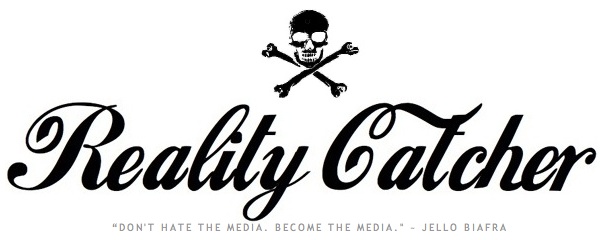


Alton Kelley, psychedelic poster creator, dies
By Joel Selvin
San Francisco Chronicle Senior Pop Music Critic
Tuesday, June 3, 2008
Alton Kelley, one of the founding members of the '60s San Francisco rock scene, died Sunday at his home in Petaluma after a long illness. He was 68.
Kelley will be remembered as the creator (with his artistic partner, Stanley Mouse) of hundreds of classic psychedelic rock posters, such as the famed "Skull and Roses" poster for a Grateful Dead show at the Avalon Ballroom. Kelley and Mouse created 26 posters for just the first year of the Avalon's operation.
But Kelley was also one of four people who called themselves the Family Dog and decided to throw the world's first psychedelic dance-concerts at Longshoreman's Hall in September 1965, essentially starting the San Francisco scene. The quartet had just returned to the Bay Area after spending an LSD-drenched summer restoring a silver rush dancehall in Virginia City, Nev., called the Red Dog Saloon.
Kelley, a motorcycle enthusiast since his New England youth who painted pinstripes on bike gas tanks, designed the flyers advertising the original Family Dog shows, but lacked drafting ability. When he met Stanley Mouse, who had recently relocated from Detroit where he made a name for himself doing hot rod art, Kelley found the draftsman he needed. The two formed Mouse Studios and cranked out art together, Kelley's drawing skills eventually improving to the point where left-handed Kelley would be working on one side of the easel, right-handed Mouse on the other.
"He had the most impeccable taste of anybody I knew," said Mouse. "He would do the layouts, and I would do the drawing." They worked together steadily for 15 years and on and off thereafter. Their Mouse Studios was located in a converted Lower Haight firehouse where Janis Joplin first rehearsed with Big Brother and the Holding Company. They also opened a store called Pacific Ocean Trading Company (POT Co.), one of the first head shops in Haight-Ashbury. Recently, the two collaborated on the cover to the program for this year's Rock and Roll Hall of Fame induction dinner.
Mouse said they could work for hours in silence. "We knew what to do," he said. "We didn't have to talk."
During the heyday of the Avalon Ballroom, the pair would frequent the public library looking for images they could employ in their poster-making; Edward Curtis photographs of American Indians, illustrations from 19th century novels (the skull and roses was adapted from "The Rubaiyat of Omar Khayyam"), often laughing so loud at what they found the librarians would ask them to leave.
"They thought it was the funniest stuff in town," said Paul Grushkin, author of The Art Of Rock. "The twinkle in Kelley's eye - he knew it was all a giggle."
"Stanley and I had no idea what we were doing," Kelley told The San Francisco Chronicle last year. "But we went ahead and looked at American Indian stuff, Chinese stuff, Art Nouveau, Art Deco, Modern, Bauhaus, whatever. We were stunned by what we found and what we were able to do. We had free rein to just go graphically crazy. Where before that, all advertising was pretty much just typeset with a photograph of something."
The work of Kelley and Mouse has come to be recognized as a 20th century American counterpart to the French poster art of Henri de Toulouse Lautrec during the Belle Epoque, although the two psychedelic artists never imagined at the time they were creating anything of enduring value, anything more than another crazy poster for this week's Avalon show.
"We were just having fun making posters," said Mouse. "There was no time to think about what we were doing. It was a furious time, but I think most great art is created in a furious moment."
http://www.sfgate.com/cgi-bin/article.cgi?f=/c/a/2008/06/02/BAQS111UJ4.DTL
Alton Kelley, 68; Graphic Artist With a Flair for the Psychedelic
By Patricia Sullivan
Washington Post Staff Writer
Tuesday, June 3, 2008
Alton Kelley, 68, a graphic artist whose mind-blowing posters and album covers for the Grateful Dead, Big Brother & the Holding Company and legendary San Francisco concert halls ushered in the psychedelic rock-and-roll era, died June 1 of complications of osteoporosis at his home in Petaluma, Calif.
Kelley, with his life-long collaborator, Stanley "Mouse" Miller, created some of the most distinctive and memorable images in rock music, including the famous "Skull and Roses" emblem for the Grateful Dead and the "Girl With Green Hair" poster that advertised a concert at the Avalon Ballroom.
His work, with its colorful swirls, spiral designs and exaggerated hand-drawn lettering, plastered telephone poles, head-shop windows and vacant buildings in San Francisco in the 1960s. The handbills cost about $5 to print and were given away at the end of concerts. They now sell for tens of thousands of dollars to art collectors who compare them to the belle epoque art of such masters as Henri de Toulouse-Lautrec and Alphonse Mucha. Kelley and Mousescored their first big hit with a 1966 poster advertising a concert of Big Brother & the Holding Company and the Quicksilver Messenger Service. The art was based on the logo of the Zig-Zag cigarette rolling-paper company.
"When Stanley and I did that poster, we got really paranoid," Kelley said. "We figured, 'Oh no. Now they know we smoke dope!' And we took what little pot we had and flushed it down the toilet. But we wanted to create something that was visual and would make people stop in the streets and read and figure it out. It worked like a charm."
The word on the streets of San Francisco at the time was that if you could not read the poster, you should not go to the concert, said rock historian Paul Grushkin, who wrote The Art Of Rock: Posters From Presley To Punk [1987].
http://www.washingtonpost.com/wp-dyn/content/article/2008/06/02/AR2008060202725_pf.html






























No comments:
Post a Comment